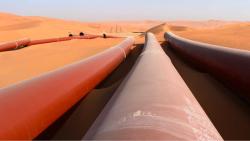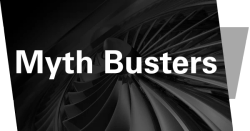
OR WAIT null SECS
© 2024 MJH Life Sciences™ and Turbomachinery Magazine. All rights reserved.
Best practices for machinery installation
A good foundation and proper installation is a critical for successful commissioning. This section covers different equipment installation steps and standard practices and provides thumb rules and precautions for these installation steps:
This article contains an excerpt from the paper, "Save your Centrifugal Machinery during Commissioning" by Arun Kumar and Mohit Sabharwal of HPCL-Mittal Energy.
FOUNDATION PREPARATION: Ensure equipment foundations are as per approved drawings. As a thumb rule, the foundation block should be 3 times of mass of equipment. Usually pockets are left open for inserting the foundation bolts/Anchor bolts. Pocket size should be sufficient to accommodate the foundation bolts with sleeve as well as minor movement of equipment to align with trailing or upstream equipment. After installation and commissioning of equipment, equipment foundation should be epoxy painted (coating) to increase its life as well as to protect against soil pollution. Over a period of time, hydrocarbon and water ingress and weakens the foundation
INSTALLATION OF LEVELLING PAD: Mark the centerline of foundation and center line of equipment. Check for the approximate position of equipment nozzles if applicable. Install the leveling plate using grout on leveling jack screw. If jack screws are provided the base plate can be leveled using jack screw before grout filling. If leveling jack screws are not provided, base frame should be leveled on leveling plate directly. In such cases, leveling plate is fixed and leveled first and base frame is mounted on leveling plates.
EQUIPMENT ERECTION
Usually equipment is shipped on base frame & can be erected as a unit. If base frame is supplied separately, then base frame is to be erected and leveled first.
o Prior to erection of base plate, foundation bolt to sleeve clearance (Freeness) is to be checked and foundation bolts with sleeve should be inserted into the pocket provided in the foundation block.
o Base frame is to be leveled on leveling plate or using jack screws to 0.02inch/ft. (0.17mm/m). All feet are to be leveled within 0.002 Inch (0.05mm).
o If required, the base frame bottom should be painted with epoxy grout primer.
o After leveling of base plate, all foundation pockets should be filled with epoxy grout. o If the driver is mounted on a separate foundation, rough alignment is to be done prior to foundation bolts pocket filling to ensure alignment with upstream and downstream equipment.
o After curing of epoxy grout, foundation bolts are to be tightened to the desired torque.
o Complete base frame should be filled with epoxy grout through grout holes.
o All pedestal and mounting plates should be blue matched to ensure flatness of pedestals.
o Equipment and driver soft foot is to be checked. The maximum allowable limit is 0.002Inch (0.05mm).
o Best Practices - Soft foot checks and correction during erection phase itself may eliminate undesired vibration generated during trial run and last minute chaos during equipment trial runs.
o It is usually recommended to place minimum 3 to 5 mm single shim plates on equipment (Both driver and driven) foots to take care of alignment correction during hot alignment and consecutive overhauling after scheduled runs. Typically, steam turbines are kept lower than driven equipment to take care of thermal expansion during operation



